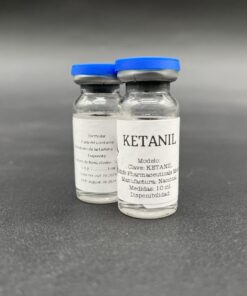£90.00 – £280.00Price range: £90.00 through £280.00
R-ketamine, also known as arketamine, is the (R)-enantiomer of ketamine, currently being researched for its potential as a rapid-acting antidepressant with fewer side effects compared to its counterpart, S-ketamine (esketamine)
What is Racemic Ketamine?
The mixture of R-Ketamine and S-Ketamine occurs in equal amounts in Racemic Ketamine. The medical community began using it professionally in the 1960s when administering it as an anaesthetic. The pharmaceutical industry employs racemic ketamine as an unapproved medication to treat patients with treatment-resistant depression (TRD), bipolar disorder, and PTSD.
How It Works
-
Enantiomer: R-ketamine is one of the two mirror-image forms of ketamine, the other being S-ketamine. The combination of both forms is known as racemic ketamine.
-
Potency: R-ketamine has a lower affinity for the NMDA receptor compared to S-ketamine, making it less potent as an anesthetic but potentially more effective as an antidepressant.
The brain contains specific locks such that ketamine functions as a key that fits into these areas. Receptors within your brain act as locks that control your mood and stress management functions. The specific brain receptors, known as NMDA and AMPA receptors, direct the action of racemic ketamine, which regulates emotional processing and stress response mechanisms in the brain. Brain-Derived Neurotrophic Factor (BDNF) production, along with other proteins that foster brain cell growth and connection, gets a boost from this substance.
Clinical Evidence
Serious mood-enhancing effects of Racemic Ketamine appear shortly after administration and deliver results much more rapidly than standard antidepressantmedications do. Symptoms of dissociation, as well as hallucinations and dizziness, may emerge as temporary adverse effects of treatment when using this medication. The side effects shown by patients generally disappear after a short time
Racemic Ketamine BUY oNLINE fAST Shipping
| Grams | 1, 3.5, 7, 14 |
|---|
Be the first to review “Racemic Ketamine Needles” Cancel reply
Related products
ketamine
ketamine







Reviews
There are no reviews yet.